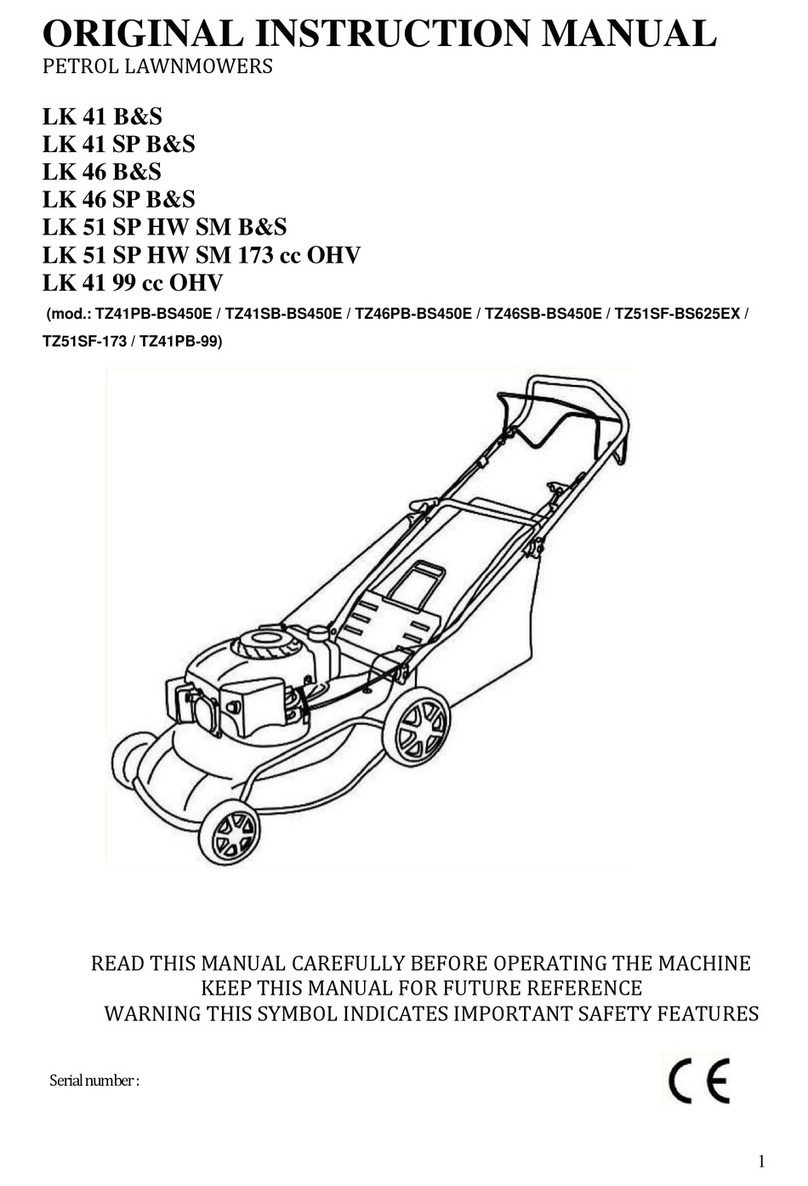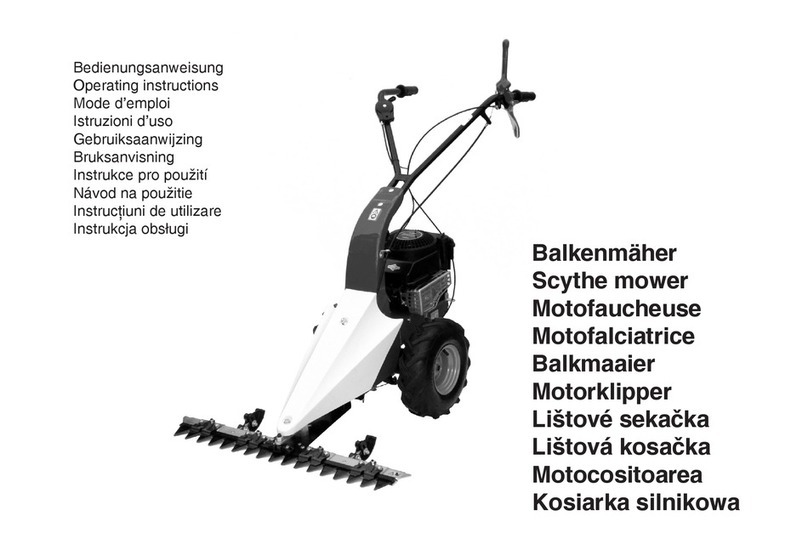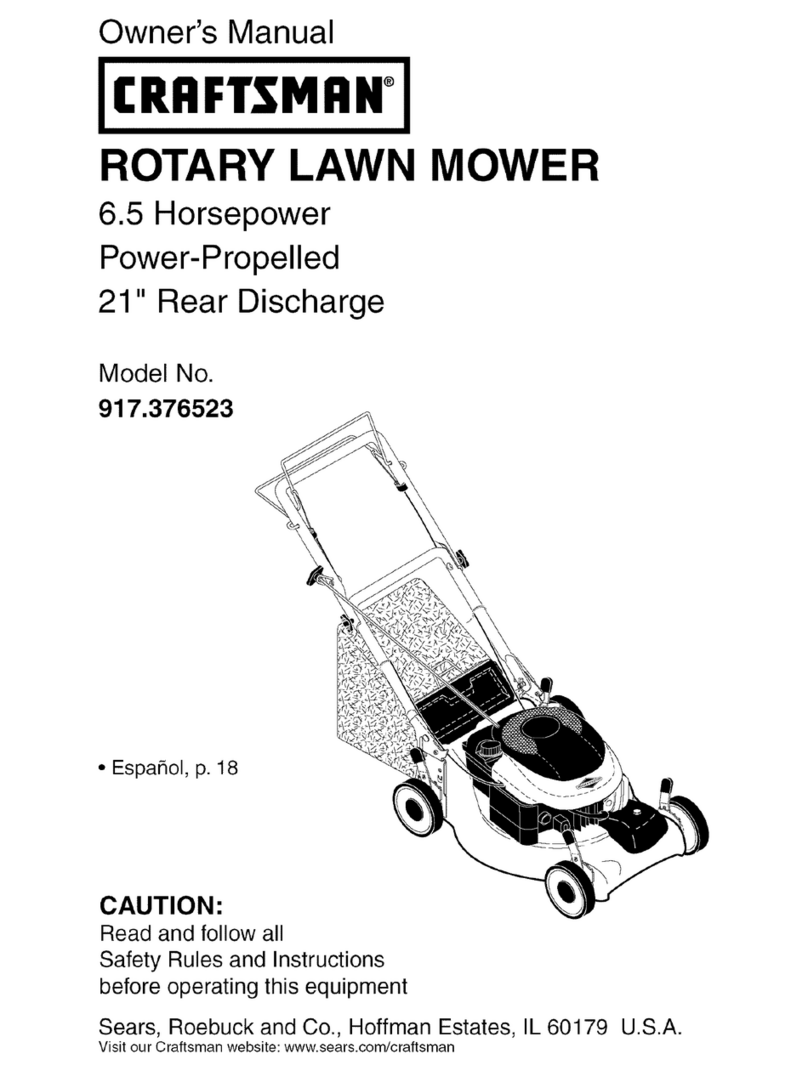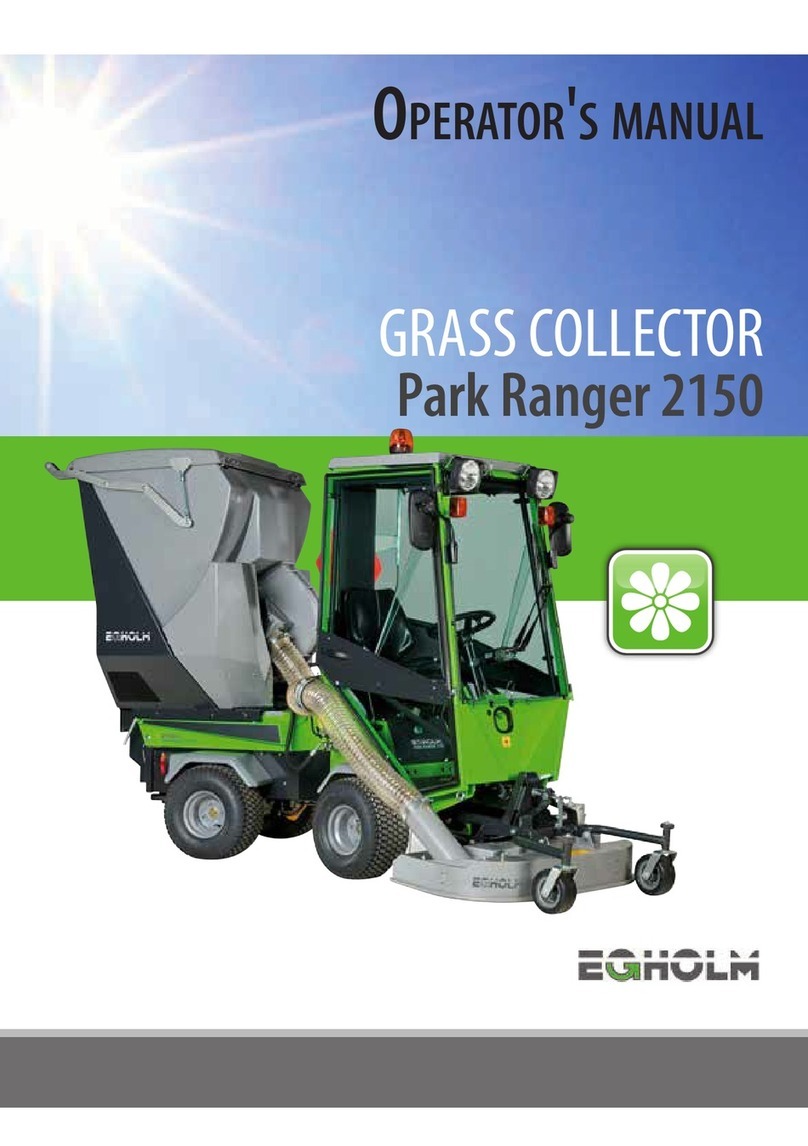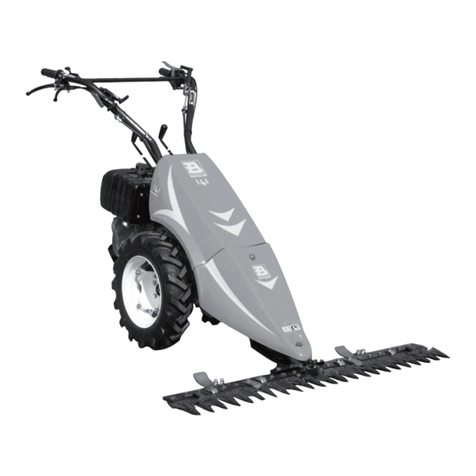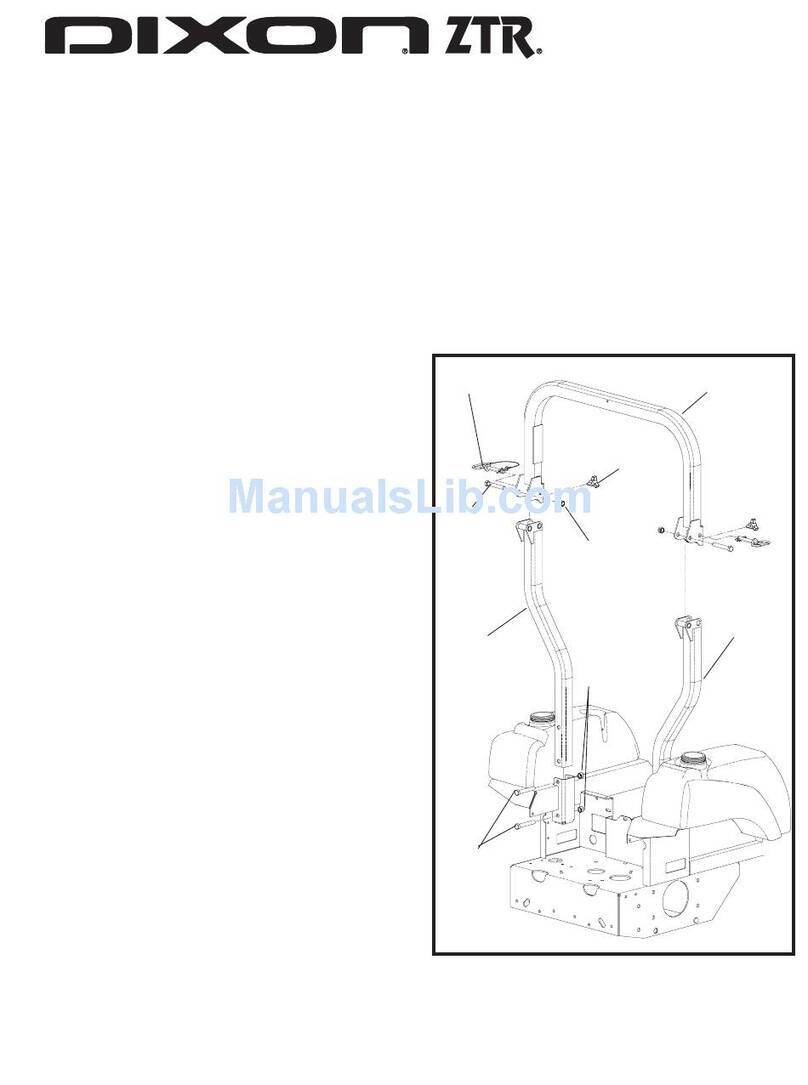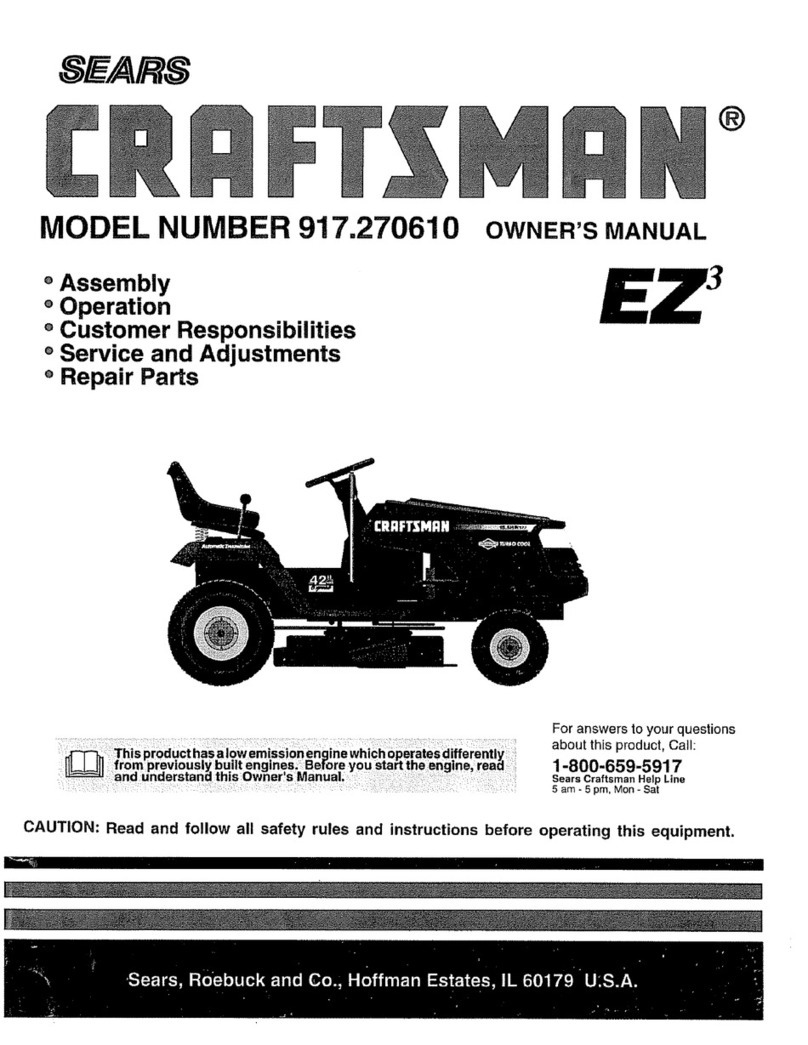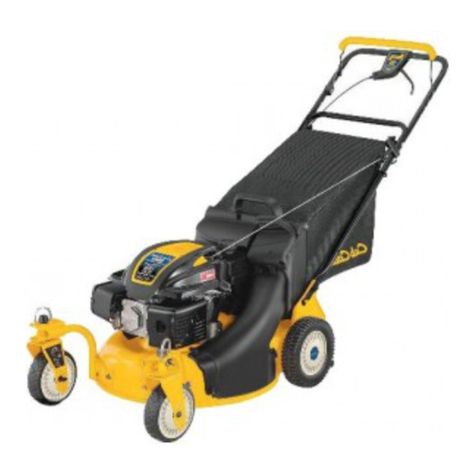Lawn-King VENTURER Guide







Max. 17°



TECHNICAL SPECIFICATIONS
MODEL: hydrostatic ride on mower.
ENGINE: B&S INTEK, 344 cm 3 13HP 3300 rpm max. 4-stroke OHV petrol, with oil pump, oil filter cast iron cylinder
FUEL TANK VOLUME: 7 litres – RESERVE: 1,5 litres
HOURLY CONSUMPTION: about 3 litres/h.
STARTER: electric, with battery 12 V
TRANSMISSION: hydrostatic
CLUTCH: for PTO with electromagnetic clutch
SPEED: from 0-9 km/h: continuous variation and reverse from 0 to 4 km/h
TYRES (GARDEN WHEELS) front: 13x5.00-6 / re r: 16x7.50-8
BRAKE: rear parking disc brake
SEAT: sprung and adjustable
CUTTING DECK: rear discharge
CUTTING SYSTEM: single blade with floating terminals
CUTTING WIDTH: 850mm
CUTTING HEIGHT: from 35 to 85 mm, 6 cutting positions plus 1 for transfer.
BLADE SPEED: 74 m/sec
HOURLY MOWING CAPACITY: 4500 m2/h (indicative)
STEERING RADIUS: 450 mm
SIZES: Width: 900 mm – Length: 1895 mm – Height: 975 mm
WEIGHT: 215 kg
TRAILER HITCH AND HEADLIGHT: included
PUTTING THE MACHINE INTO SERVICE
1. Make sure the machine is complete and that it has not suffered any damage during the transit.
2. Check the oil level of: the engine, the hydrostatic transmission and final drive
3. Check the tyre pressure: 1 BAR front wheels 13 x 5.00-6 - 1.2 BAR rear wheels 16x7.50 – 8
4. Check the battery voltage, it must not be less than 12.5 Volts; charge if necessary.
C ution! The gases released by the battery are explosive, so keep it away from naked flames or sparks. Check at
regular intervals and keep the terminals greased with vaseline.
Import nt!: - Do not invert the battery poles.
- Do not run the lawnmower without the battery, as it is equipped with a charge
regulator.
- Be careful not to cause short circuits.
5. Fix the steering wheel taking care the key is properly inserted and the screw is tight enough (tighentening torque
2KgF.m [20 N.m]).
RUNNING IN – CAUTION!
Change the engine oil and filter after the first 5 hours of work.
Check for oil leaks or loose screws, especially those that fix the blade, the steering and the wheels.
INSTRUCTIONS FOR USE
Before starting up the engine always check that:
- the travel lever is in the idle position (fig. 3)
- the engine oil level is correct (fig. 4)
- the engine cooling intake grilles are clean (fig. 4)
- air filter is clean (fig. 8)
- the mowing deck is clean
- the hydraulic motor fins are clean (fig. 5)
- the blades are sharp and firmly fastened in place;
- the screw in the centre of the blade hub is securely tightened (3, fig. 9)
- the oil in the hydraulic axle (fig. 5) is at the correct level; the correct level is 12 mm underneath the bottom of the tank.
Fill the fuel tank with fuel (petrol) using a funnel fitted with a very fine mesh filter (fig. 10).
Adjust the seat by using the lever (fig. 11).
-7-

STARTING UP THE ENGINE
- Sit down on the operator seat.
- Put the forward lever into the STOP position (2, fig. 3)
- Switch off the PTO switch (4, fig. 1 in the OFF position).
- Push the throttle half way in (5, fig. 3).
- If the engine is cold, use the choke (6, fig. 3). Turn the ignition key (1, fig. 1).
- Once the engine has started, turn off the choke and wait for a few minutes to allow the engine to
warm up.
N.B. When travelling with the mower from one place to another, you are advised to keep the cutting deck
height setting.
STARTING WORK
- Choose the desired cutting height by means of a lever 8 fig. 2. Suitably accelerate the engine and engage
the PTO switch (4, fig. 1). Gently operate the forward travel lever (2, fig. 3) and start work. To stop, return
the forward travel lever to the stop position.
- The lever (2, fig. 3) is also used to reverse. When it is moved back, the machine moves backwards; always
operate it gently.
PARKING BRAKE
To engage the parking brake lift the loop up (10, fig. 3) and hook the lever.
To adjust the parking brake use the register (fig. 5).
ENDING WORK
After mowing, disengage the blades and drive back to base with the cutting deck in the highest position. To
stop, move the lever to the STOP position (2, fig. 3) set the throttle lever on the minimum rpm, switch off the
engine by turning the key (1, fig. 1) and the lower deck to the lowest position.
GUIDELINES FOR EFFECTIVE USE
The machine can also be used under most demanding conditions. Certain measures must be taken and all
devices must be adjusted properly.
1) Before starting work check that the deck is perfectly clean without any dried grass or soil crusting.
2) Check the terrain before mowing, make sure there are no stones, sticks or foreign objects.
3) While mowing keep the engine at maximum revs., adjust the speed to suit the height of the grass.
Be careful when coming across tall thick clumps of grass, slow down.
4) Sharpen the mower blades regularly; the cut will be better and the engine will not be strained as much.
5) Engage the blade some metres before getting into the grass to cut, so the cutting deck is cleaned and the
clutch is protected.
6) If the grass is wet or very tall, do not cut in the lowest position, but at an intermediate height.
7) Check the tension of the belt that work the deck; use the adjuster if necessary.
8) Check that the blades are not worn or damaged.
9) Check that the blades are fitted properly.
10) Check the deck is aligned to the ground.
11) Check the engine revolutions (3300 max.)
12) While mowing keep the engine at maximum revs.; if the engine revs. drop, slow down for a while to allow
the engine to reach the right level again.
13) Never strain the engine: when fumes are emitted from the exhaust it means theat it is being strained.
Slow down.
14) Keep the grilles above the engine and the cooling fins of the hydraulic motor (fig. 4 – 5)
15) Do not leave the machine out in the rain.
16) ATTENTION! Road circulation is forbidden as the machine has no type approval.
MOWING POSITIONS
The cutting position is adjusted using the lever 8 fig. 2. The deck can be set in 4 cutting positions from 35 to
80 mm and one travel position in which the blade disengages automatically.
In case of uneven ground, humps or dips, the deck should be kept in the highest cutting position to prevent
knocks by the blade.
SLOPING GROUND
Steep ground should be tackled in an up-and-down movement, being very careful at direction changes that
the wheels upstream do not strike any obstacles (stones, branches, roots, etc...) which might cause
-7-


CHECKING THE BLADES AND CUTTING DECK
A blunt blade tears the grass, therefore the cutting edges of both blades must be sharpened. To remove a
blade, take hold of it firmly, wearing work gloves, and unscrew the central screw (3 fig. 9), remembering that
the screw has a right hand thread. Sharpen both cutting edges using a medium grain grinding wheel and
check that the blade is balanced by standing it on a round bar inserted in the central hole. Fit the two cutting
blades following the diagram in fig. 9.
CAUTION!
Tighten the fixing screw (3 fig. 9) firmly. Always replace damaged or crooked blades; never attempt to repair
them! When fitting, always follow the diagram fig. 9.
ALWAYS USE ORIGINAL BLADES! If they are worn they can be turned round since they have two cutting
edges. Always check that the blade bolts are not worn or damaged.
ADJUSTING THE CUTTING DECK
Levelness of the cutting deck is essential in order to obtain an evenly mown lawn.
Park the mower on a flat surface and check that the tyre pressure is correct. Adjust the 4 adjustment devices
(fig. 17 17A), so that the edge of the cutting plate is at the same distance from the floor, 110 mm, on both
sides (with the operator sitting on board and the cutting deck in the lowest position, fig. 18/A). If you are
unable to level off the deck, contact your Dealer.
BLADE – ENGINE BELT
To adjust the belt tension operate on the register (fig. 18). If the belt becomes twisted or comes off, make all
the checks and adjustments illustrated in fig. 18/A, keeping the deck at the lowest position. Take care when
positioning the belt guides; move them towards the belt, checking the deck at the various height settings (A,
fig. 19).
HYDROSTATIC AXLE – ENGINE BELTS
These belts are self-adjusting and do not require any adjustment. Simply check the spring tension. To
replace the belts, release the tension spring (fig. 21).
BLADE ROTATION
Rotation is started and stopped using the button fig.1 ref. 4 . When rotation is engaged, the engine must be
running at medium rpm and the machine must not be in the grass for cutting. The blade is disengaged when
the PTO switch is moved to OFF ( fig.1 ref. 4). The blade will also stop when the gear lever is positioned on
TRANSFER fig. 2.
N.B. This operation must be carried out by an Authorised After-Sales Service Centre.
CHANGING THE BELTS
The movement is transmitted from the motor to the hydraulic transmission and to the blades by means of two
v-belts. Replace the belts as soon as they show signs of wear! Their replacement and subsequent
adjustment are fairly complex procedures and must be carried out by an Authorised After-Sales Service
Centre. For cutting the drive belt, the belt guide fig. 19 beside the deck pulley has to be removed; release the
belt stretcher spring (fig. 20) and remove the casing.
ALWAYS USE ORIGINAL BELTS!
TRACTION RELEASE LEVER
The traction release device is located at the back of the machine (fig. 22), if the machine breaks down, to
allow it to be towed or moved by hand, move the lever to the idle position (B, fig. 22). In the position (A)
shown in fig. 22 the machine is in working condition.
TROUBLESHOOTING GUIDE
PROBLEM CAUSE REMEDY
Dashboard OFF with key in the “AVV.” [ON]
position
The battery is not supplying power. - Check connecting cables
- Recharge battery
- Replace the fuse
Dashboard ON, but the starter motor does
not turn over with the key in “Avv.” [ON]
position.
The battery is not supplying power. - Recharge battery
-10-



TECHNICAL
DRAWINGS
VALID AS FROM
FRAME NO.
565895




Table of contents
Other Lawn-King Lawn Mower manuals
Popular Lawn Mower manuals by other brands

Toro
Toro TimeCutter HD MyRide 48in Operator's manual
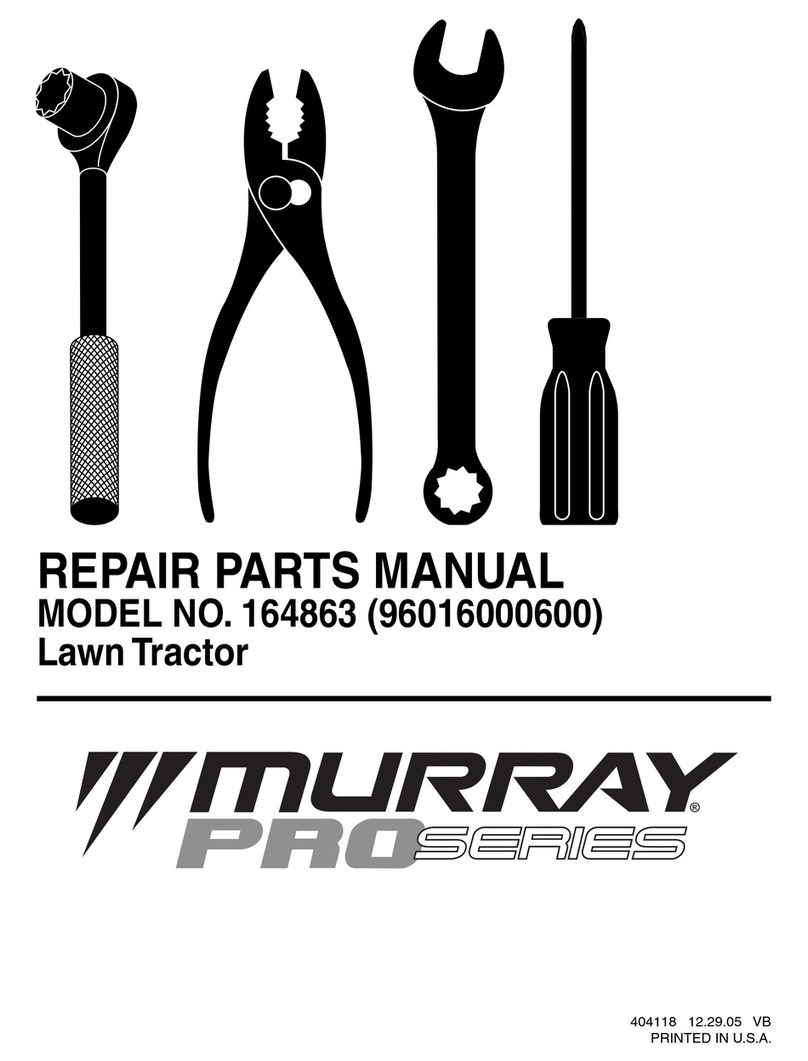
Murray
Murray PRO Series Repair parts manual
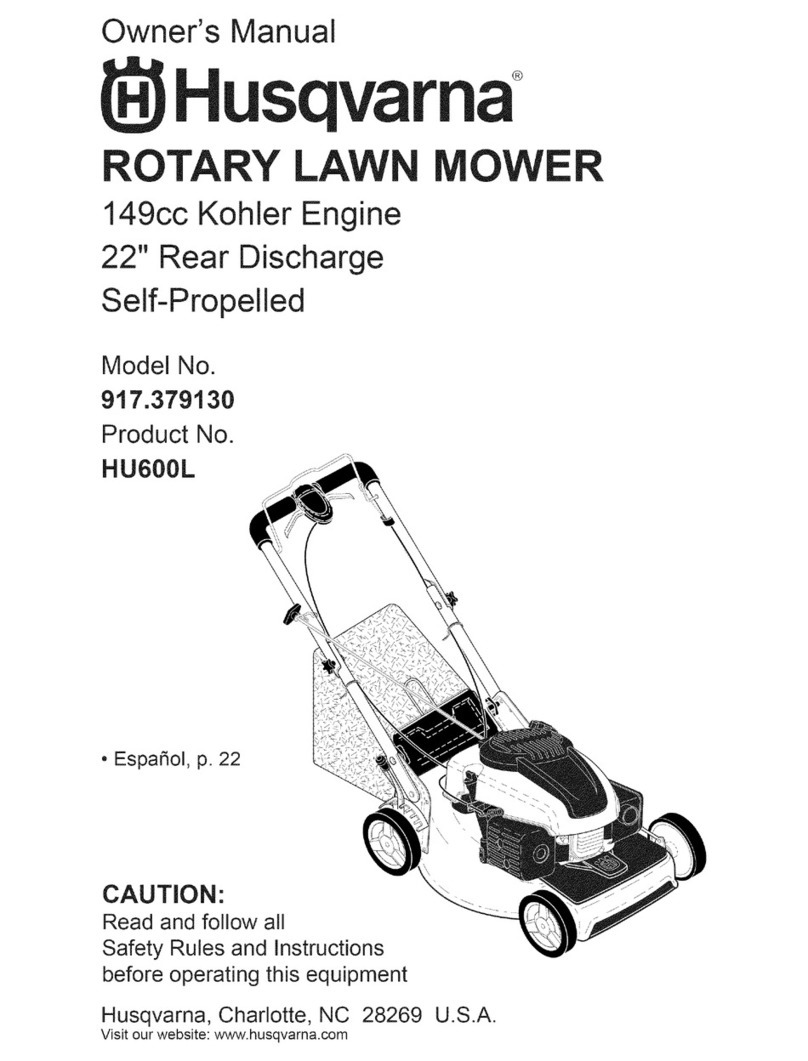
Husqvarna
Husqvarna 917.379130 HU600L owner's manual

Black & Decker
Black & Decker GRC4736SD Original instructions
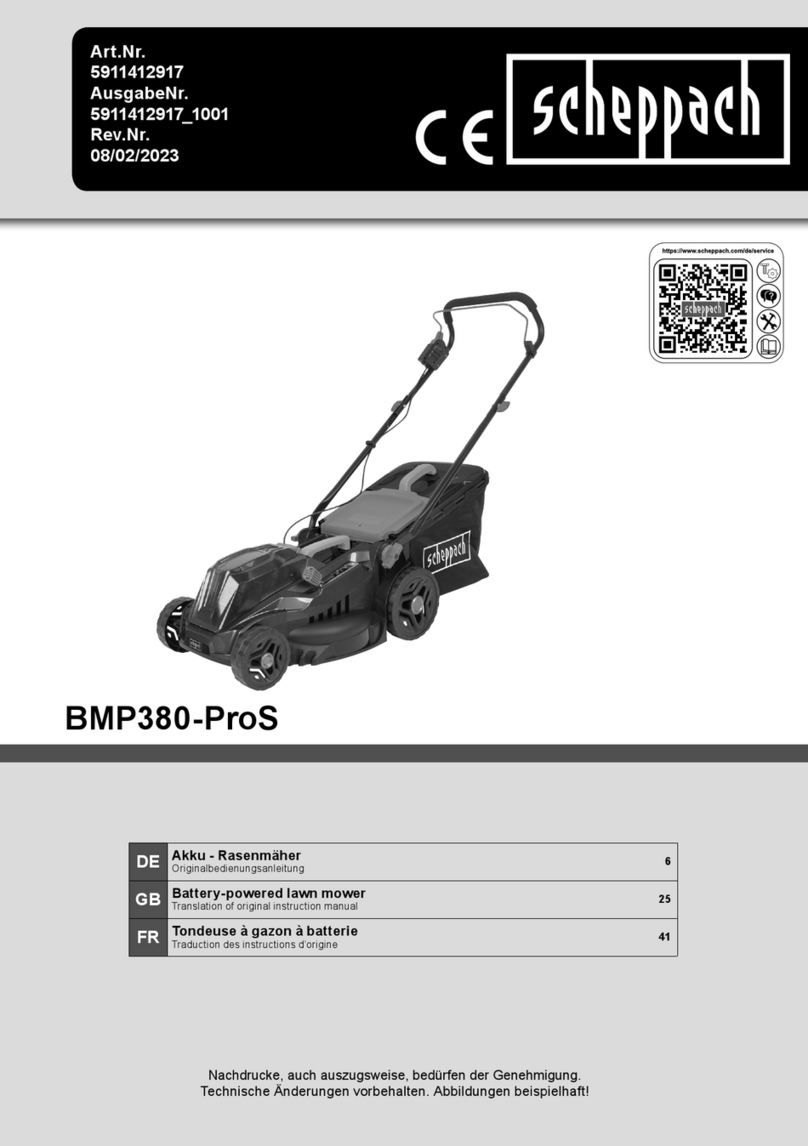
Scheppach
Scheppach BMP380-ProS Translation of original instruction manual

Toro
Toro 30446 Operator's manual


